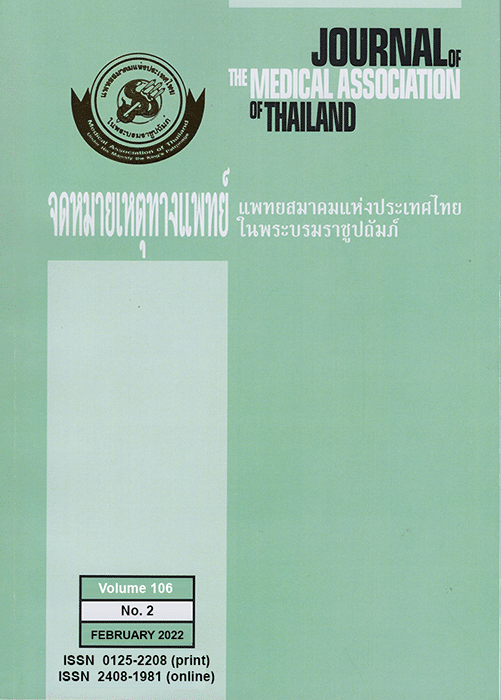
Maternal and neonatal outcomes of parturients with or without amniotomy for augmentation of labor (2017)
Title : Maternal and neonatal outcomes of parturients with or without amniotomy for augmentation of labor
Researcher : Thirawat, S., Kovavisarach, E.
Abstract : Objective: To determine the maternal and neonatal outcomes of the low-risk term pregnancies with or without amniotomy for augmentation of labor.
Material and Method: A retrospective cohort study of term pregnant women in cephalic presentation with labor pain who delivered in Rajavithi Hospital between January 1 and December 31, 2014 was conducted. Those parturients whose membranes were ruptured by amniotomy were study cases and those whose amniotomy were not performed and delivered immediate after the study cases were assigned as the control cases.
Results: Five hundred ninety eight women with uncomplicated pregnancy were enrolled and divided equally into two groups, one of 299 cases with amniotomy and another 299 cases without amniotomy. The present study showed that pregnant women in amniotomy group had a significantly higher rate of cesarean delivery (p<0.001) and birth asphyxia (p = 0.002). The duration of labor, maternal complications, and neonatal complications were not significantly different between the two groups.
Conclusion: Rate of cesarean delivery and birth asphyxia were significantly higher in the amniotomy group compared with the non-amniotomy group.
Keywords: Amniotomy, Duration of labor, Cesarean delivery, Neonatal outcome, Uncomplicated pregnancy
Link to Academic article: http://www.jmatonline.com/index.php/jmat/article/view/8451
Journal : Journal of the Medical Association of Thailand, 2017, 100(11)
Bibliography : Thirawat, S., & Kovavisarach, E. (2017). Maternal and neonatal outcomes of parturients with or without amniotomy for augmentation of labor. Journal of the Medical Association of Thailand, 100(11), 1156–1161.
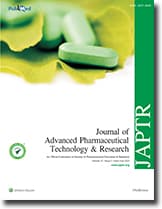
Modulation of platelet functions by Careya sphaerica Roxb. leave extracts (2021)
Title : Modulation of platelet functions by Careya sphaerica Roxb. leave extracts
Researcher : Warachate Khobjai1, Wanvisa Ninlaor2, Worawan Watcharasamphankul3, Thaksaorn Thongom2, Suriyan Sukati4
Department : 1 Department of Preclinic, Faculty of Medicine, Siam University, Phasi Charoen, Bangkok, Thailand
2 Department of Thai Traditional Medicine, Thai Traditional Medicine College, Rajamangala University of Technology Thanyaburi, Pathum Thani, Thailand
3 Department of Clinical Microbiology, Faculty of Medical Technology, Nation University, Lampang, Thailand
4 Department of Medical Technology, School of Allied Health Sciences, Walailak University, Nakhon Si Thammarat, Thailand
Abstract : Platelets form a plug to prevent blood loss and contribute to wound healing. Kradonbok, Careya sphaerica Roxb., is a Thai plant with medicinal properties. Conventionally, leaves of C. sphaerica are being used to help wound healing in Thailand. The present study was aimed to investigate the effect of C. sphaerica on the function of platelet. Four different extracts of leaves of C. sphaerica (distilled water, methanol, ethanol, and chloroform extracts) were prepared. The extracts at 5.0 mg/ml per dose were tested for the effect of C. sphaerica on platelet adhesion and aggregation properties, by employing a microtiter plate approach. The phytochemical identification was done by using gas chromatography–mass spectrometry (GC-MS). Our data revealed that chloroform extract significantly activated thrombin-induced platelet adhesion (105.27 ± 0.11%, P < 0.05). None of the extracts exhibited an improvement in platelet aggregation. Further GC-MS analysis of the chloroform extract revealed five key phytochemical constituents with potential platelet activation properties. In conclusion, our study evaluated platelet activation and potentially wound healing property of C. sphaerica. GC-MS analysis identified potential bioactive phytochemical compounds in C. sphaerica which warrant further investigation to characterize these compounds.
Keywords: Careya sphaerica roxb, platelet adhesion, platelet aggregation, primary hemostasis, wound healing
Link to Academic article: DOI:10.4103/japtr.japtr_95_21
Journal : Journal of Advanced Pharmaceutical Technology and Research, 2021, 12(4).
Bibliography : Khobjai, W., Ninlaor, W., Watcharasamphankul, W., Thongom, T., & Sukati, S. (2021). Modulation of platelet functions by Careya sphaerica Roxb. leave extracts. J Adv Pharm Technol Res, 12(4), 420-424. Retrieved from: https://www.japtr.org/text.asp?2021/12/4/420/328638
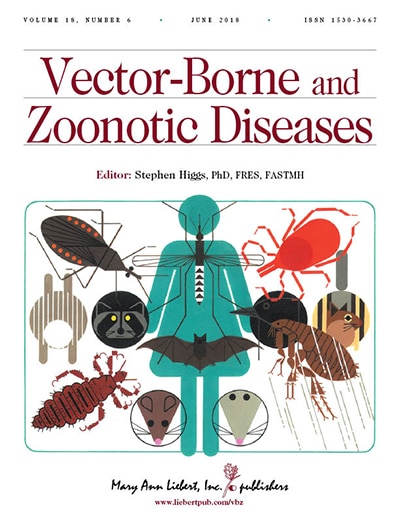
Molecular Evidence of Rickettsia in Human and Dog Blood in Bangkok (2018)
Title : Molecular Evidence of Rickettsia in Human and Dog Blood in Bangkok
Researcher : Mongkol, N., Suputtamongkol, Y., Taweethavonsawat, P., Foongladda, S.
Abstract : Rickettsia spp. has been detected in dog fleas in Bangkok, Thailand. With the intent of collecting evidence to confirm the presence of rickettsioses in dogs and to assess the level of associated potential for accidental human infection, human buffy coat from patients with fever of unknown origin (n = 168), whole blood samples from dogs (n = 353), and 19 flea groups from our dog sample population were studied during the 2012 to 2014 study period. The presence of Rickettsia was investigated by molecular detection of 23S rRNA gene of Rickettsia genus, citrate synthase (gltA) gene, and 17-kDa outer membrane gene. All positive samples were confirmed by DNA sequence analysis. Using phylogenetic analysis, three groups of Rickettsia were detected, as follows: Rickettsia felis in 8 patients and 8 dogs; R. felis-like sp. in 2 patients, 5 dogs, and 11 flea samples; and Rickettsia typhi in 3 patients. In addition to confirming the presence of R. felis in Thai patients, the findings of this study suggest that R. felis-like sp. isolated from fleas that were symbiotically coexisting with dogs that we evaluated in this study can transmit and cause disease in dogs and humans in Bangkok.
Link to Academic article: https://doi.org/10.1089/vbz.2017.2180
Journal : Vector-Borne and Zoonotic Diseases, 2018, 18(6).
Bibliography : Mongkol, N., Suputtamongkol, Y., Taweethavonsawat, P., & Foongladda, S. (2018). Molecular Evidence of Rickettsia in Human and Dog Blood in Bangkok. Vector-Borne and Zoonotic Diseases, 18(6), 297–302.
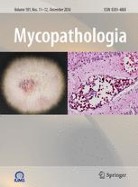
Multi-probe Real-Time PCR Identification of Four Common Candida Species in Blood Culture Broth (2014)
Title : Multi-probe Real-Time PCR Identification of Four Common Candida Species in Blood Culture Broth
Researcher : Foongladda, S., Mongkol, N., Petlum, P., Chayakulkeeree, M.
Abstract : We developed a single-tube real-time polymerase chain reaction (PCR) assay with multiple hybridization probes for detecting Candida albicans, C. tropicalis, C. glabrata, and C. parapsilosis. Primers were designed to amplify 18S rRNA gene of the genus Candida, and DNA probes were designed to hybridize two areas of the amplicons. The amplification curves and specific melting peaks of the probes hybridized with PCR product were used for definite species identifications. The reaction specificity was 100 % when evaluating the assay using DNA samples from 21 isolates of fungal and bacterial species. The assay was further evaluated in 129 fungal blood culture broth samples which were culture positive for fungus. Of the 129 samples, 119 were positively identified as: C. albicans (39), C. tropicalis (30), C. parapsilosis (23), C. glabrata (20), Candida spp. (5), and two samples containing mixed C. glabrata/C. albicans and C. glabrata/C. tropicalis. The five Candida spp. were identified by sequencing analysis as C. krusei, C. dubliniensis, C. aquaetextoris, and two isolates of C. athensensis. Of the ten samples which showed negative PCR results, six were Cryptococcus neoformans, and the others were Trichosporon sp., Rhodotorula sp., Fusarium sp., and Penicillium marneffei. Our findings show that the assay was highly effective in identifying the four medically important Candida species. The results can be available within 3 h after positivity of a blood culture broth sample.
Link to Academic article: DOI: 10.1007/s11046-014-9743-7
Journal : Mycopathologia, 2014, 177(5-6).
Bibliography : Foongladda, S., Mongkol, N., Petlum, P., & Chayakulkeeree, M. (2014). Multi-probe Real-Time PCR Identification of Four Common Candida Species in Blood Culture Broth. Mycopathologia, 177(5-6), 251–261. DOI: 10.1007/s11046-014-9743-7
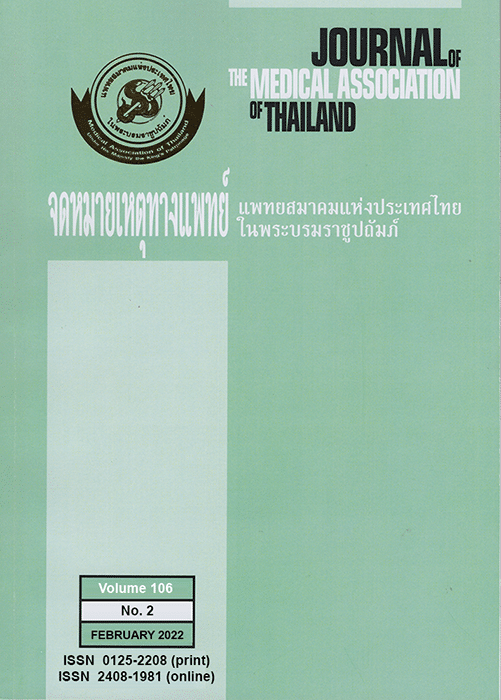
Need for internal medicine subspecialists in Thailand (2017)
Title : Need for internal medicine subspecialists in Thailand
Researcher : Leelarasamee, A., Intragumtornchai, T., Pannarunothai, S., …Krittayaphong, R., Bowonwatanuwong, C.
Abstract : Background: Matching supply side of the Internal Medicine (IM) subspecialists to the demand for complex medical care at referral medical centers would lead to more efficient health system management and ultimately optimal clinical outcome. The second decade of the universal health coverage policy in Thailand has raised the awareness on how to reach equitable utilization goals of good quality medical services, while barriers of accession have been removed. More accurate evidence-based human resource planning is timely needed.
Objective: To estimate the number of the ten subspecialists in internal medicine (neurologist, cardiologist, endocrinologist, gastroenterologist and hepatologist, nephrologist, hematologist, oncologist, rheumatologist, pulmonologist, and infectious disease specialist) needed for complex medical care based on the workload in the year 2013.
Material and Method: The present study applied a needs assessment model with evidence-based approach. Claimed data of inpatients in the year 2013 from the three government insurance schemes (the Civil Servant Medical Benefit, the Social Security and the Universal Health Coverage schemes), and out-patient data from Universal Coverage System were used to estimate demand for subspecialists. The Human Resource Working Group of the Royal College of Physicians of Thailand agreed on the conceptual framework to estimate the need for ten subspecialists based on clinical activities of outpatient consultations, inpatient ward rounds and non-operating room procedures on medical cases of respective diagnosis related group with severe and catastrophic comorbidities and complications by the Thai-DRG version 5. Representatives from the Associations of IM subspecialties approved the lists of ICD-10 diagnosis and ICD-9-CM procedure codes specific to each subspecialist care and proposed assumptions on rates of consultations from other specialists. Surveys were done to subspecialists in 6 major provincial clusters and representatives from IM subspecialty Associations asking time spent on main activities of patient care. The number of full-time-equivalent (FTE) subspecialists needed was calculated by multiplying the clinical workloads measured in minutes spent for each activity (ward round, ward work, inpatient and outpatient consultations) to get the total time needed, then divided by the available time for clinical activity of one subspecialist.
Results: From 5.9 million inpatient discharges in the year 2013, primary responsibility of patients in respective severe and catastrophic DRGs related to specific subspecialist workloads were summed up for teaching hospitals and regional hospitals ranging from as lowest the 2,849 cases for rheumatology to the highest 24,610 cases for gastroenterology and hepatology. The number of inpatient non-operating room procedures by ICD-9-CM as listed by IM subspecialty Associations ranged from 8 times for endocrinologists to 22,927 times for cardiologists for the whole year. Of ten subspecialists, the estimated numbers of cardiologist, nephrologist, neurologist, gastroenterologist and hepatologist, endocrinologist, oncologist, rheumatologist, hematologist, pulmonologist and infectious disease subspecialist needed at teaching and regional hospitals were 516, 241; 345, 144; 312, 143; 195, 124; 189, 45; 137, 170; 90, 47; 96, 111; 203, 87 and; 129, 44 respectively according to the workload recorded in the year 2013. The forecast FTE found the overall gap of discrepancy at 7 percent. If the distributions of these subspecialists in public and private hospitals were taken into account, the gap of discrepancy in public hospitals increased to 47 percent.
Conclusion: The demand-based forecast for the number of subspecialist needed was made possible with assumptions on conceptual framework for case selection, the rates of consultation and time-spent related to activities of patient care. The estimated numbers of subspecialists were anticipated far from optimum since the workload in the year 2013 was derived as a consequence of pre-existing suboptimal infrastructure of healthcare system. In addition, the deficit of subspecialists may increase in the near future when highly efficient, non- or mildly invasive, time-consuming procedures of acute illness increase. Sustainable matching demand and supply of human resource for health needed further validations of these assumptions.
Keywords: Internal Medicine subspecialists, Internal Medicine subspecialty, DRG database, demand-based forecast, human resource for healthcare system
Link to Academic article: http://www.jmatonline.com/index.php/jmat/article/view/7860
Journal : Journal of the Medical Association of Thailand, 2017, 100(2)
Bibliography : Leelarasamee, A., Intragumtornchai, T., Pannarunothai, S., Laohavinij, S., Patjanasoontorn, B., Suntorntham, S.,…Bowonwatanuwong, C. (2017). Need for internal medicine subspecialists in Thailand. Journal of the Medical Association of Thailand, 100(2), 239-253.
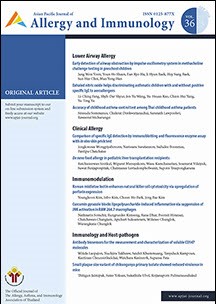
Needle length for epinephrine prefilled syringes in children and adolescents: Is one inch needle appropriate? (2018)
Title : Needle length for epinephrine prefilled syringes in children and adolescents: Is one inch needle appropriate?
Researcher : Clin.Prof.Suwat Benjaponpitak
Department : Faculty of Medicine, Siam University, Bangkok, Thailand
E-mail : med@siam.edu
Abstract : Background: Intramuscular epinephrine is the first line drug in the treatment of anaphylaxis. This study was to identify the appropriateness of 1 inch needle length for epinephrine prefilled syringes in children.
Methods: Children aged 1 month to 18 years were enrolled. Skin to muscle depth (STMD) and skin to bone depth (STBD) were measured using an ultrasonography at the mid-anterolateral thigh. A 1 inch needle was considered as being appropriate if the STBD was more than 1 inch and the STMD was less than 1 inch.
Results: Seventy five infants, 75 pre-school aged children, 75 school aged children and 147 adolescent were enrolled: 196 (52.7%) children were male. A 1 inch needle length was appropriate for 61% of the infants, for 88% of the preschool children, for 99% of the school aged children and for 95% of the adolescents. Thigh circumference ≥23 cm, BMI ≥16 kg/m2 and BW ≥ 6 kg in infants provided the sensitivity of 74%-96% in predicting the appropriateness of 1 inch needle. In preschool group, thigh circumference ≥25 cm, BMI ≥13.5 kg/m2 and BW ≥ 10 kg provided the sensitivity of 98.5-100% in predicting the appropriateness of 1 inch needle. Thigh circumference ≥ 49 cm in adolescents provided the sensitivity of 75% in predicting that a 1 inch needle was too short.
Conclusion: One inch needle length may not be appropriated for intramuscular injection at thigh in all children. Thigh circumference, BMI and body weight are useful for predictor for using the 1 inch needle.
Key words: Anaphylaxis, children, epinephrine, needle length, intramuscular
Link to Academic article: DOI: 10.12932/AP-020317-0039
Journal : Asian Pacific journal of allergy and immunology
Bibliography : Manuyakorn, W., Bamrungchaowkasem, B., Ruangwattanapaisarn, N., Kamchaisatian, W., & Benjaponpitak, S. (2018, June). Needle length for epinephrine prefilled syringes in children and adolescents: Is one inch needle appropriate?. Asian Pac J Allergy Immunol, 36(2), 113-119. doi: 10.12932/AP-020317-0039. PMID: 28938839.
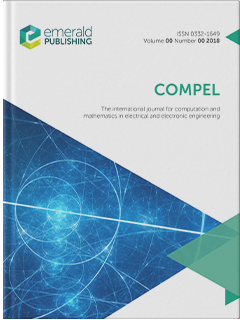
Noise analysis of electrical circuits on fractal set (2022)
Title : Noise analysis of electrical circuits on fractal set
Researcher : Banchuin, R.
Department : Faculty of Engineering, & Graduated School of IT, Siam University, Bangkok, Thailand
Email : rawid.ban@siam.edu
Abstract :
Purpose
Design/methodology/approach
Findings
Originality/value
Link to article : COMPEL – The International Journal for Computation and Mathematics in Electrical and Electronic Engineering, 2022, 41(5), pp. 1464–1490. https://doi.org/10.1108/COMPEL-08-2021-0269
Journal : COMPEL – The International Journal for Computation and Mathematics in Electrical and Electronic Engineering / in Scopus
Citation : Banchuin, R. (2022). Noise analysis of electrical circuits on fractal set. COMPEL – The International Journal for Computation and Mathematics in Electrical and Electronic Engineering, 41(5), 1464–1490. https://doi.org/10.1108/COMPEL-08-2021-0269
ฐานข้อมูลงานวิจัย มหาวิทยาลัยสยาม : https://e-research.siam.edu/kb/noise-analysis-of-electrical-circuits/

Nomogram of cervical length at mid-trimester in normal thai pregnant women (2018)
Title : Nomogram of cervical length at mid-trimester in normal thai pregnant women
Researcher : Kovavisarach, E., Sukontaman, W.
Abstract : Background:As cervical length decreases in the second trimester, the risk of spontaneous preterm birth increases, especially when effacement occurs early in the second trimester, and it is often detected on ultrasound examination before it can be identified by physical examination. To date, only two Thai nomograms of transvaginal cervical length have been reported.
Objective: To establish a new Thai nomogram as a reference for evaluation of transvaginal cervical length in a tertiary Thai hospital in Bangkok (Rajavithi Hospital: RH) during gestational age (GA) 16 to 24 weeks.
Material and Method: This research was approved by the ethics committee of RH (No. 055/2558). A total of 286 normal Thai pregnant women who attended the antenatal clinic (ANC) at RH between May 1, 2015 and November 30, 2015 were included. All were cases of singleton gestation with no medical or obstetric complications and no fetal congenital anomalies; and all had GA confirmed by Crown Rump Length (CRL) before GA of 14 weeks. Cervical length measurement was performed by a single operator using transvaginal ultrasonography (7.5 mHz Voluson E8) during GA of 16 to 24 weeks. The subjects attended follow-up sessions in the antenatal care clinic until delivery.
Results:One hundred and ninety-six cervical measurements were analysed (90 patients were excluded: 7 because of preterm labor, and 83 because they were lost to follow-up). The mean maternal age was 29.49+6.5 years, and the most common pregnancy status was nullipara (48.3%). The mean CL of nulliparous, multiparous and overall women were 37.87, 39.46 and 38.70 mm respectively. The CL values were constant during the examined GA.
Conclusion:The mean cervical length of normal Thai pregnant women between GA of 16 to 24 weeks examined transvaginally
was 38.70 mm.
Keywords: Cervical length (CL), Transvaginal ultrasonography
Link to Academic article: http://www.jmatonline.com/index.php/jmat/article/view/9091
Journal : Journal of the Medical Association of Thailand, 2018, 101(Suppl.2)
Bibliography : Kovavisarach, E., & Sukontaman, W. (2018). Nomogram of cervical length at mid-trimester in normal thai pregnant women. Journal of the Medical Association of Thailand, 101(Suppl.2), S31–S37.
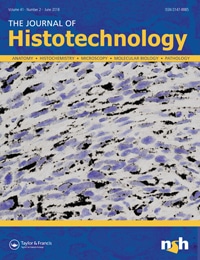
Nongenomic action of aldosterone on colocalization of angiotensin II type 1 and type 2 receptors in rat kidney (2018)
Title : Nongenomic action of aldosterone on colocalization of angiotensin II type 1 and type 2 receptors in rat kidney
Researcher : Sinphitukkul, K., Manotham, K., Eiam-Ong, S., Eiam-Ong, S.
Abstract : Previous in vitro studies have demonstrated that angiotensin II type 1 and type 2 receptors (AT1R and AT2R) are co-localized and can form AT1R/AT2R dimerization in rat proximal tubular cells. Aldosterone non-genomically enhances angiotensin II receptor dimerization. We found no other in vivo studies in the literature regarding the effect of aldosterone on colocalization of AT1R and AT2R in whole kidney. Male Wistar rats were intraperitoneally injected with either normal saline solution (sham group) or aldosterone (experimental group). Colocalization of renal AT1R and AT2R proteins was examined by double immunohistochemical staining. The colocalization of AT1R and AT2R proteins was more prominent in the glomerulus, distal convoluted tubules, and cortical collecting ducts while colocalization was weak and diffused in the proximal convoluted tubules and peritubular capillaries in both groups. Our in vivo study showed aldosterone did not alter a constitutive colocalization of AT1R and AT2R proteins in the renal cortex and medulla. However, these proteins were colocalized more prominently in the renal cortex.
Keywords: Aldosterone, angiotensin II receptors, nongenomic action, protein colocalization, rat kidney
Link to Academic article: https://doi.org/10.1080/01478885.2018.1438756
Journal : Journal of Histotechnology, 2018, 41(2).
Bibliography : Sinphitukkul, K., Manotham, K., Eiam-Ong, S., & Eiam-Ong, S. (2018). Nongenomic action of aldosterone on colocalization of angiotensin II type 1 and type 2 receptors in rat kidney. Journal of Histotechnology, 41(2), 58–65.
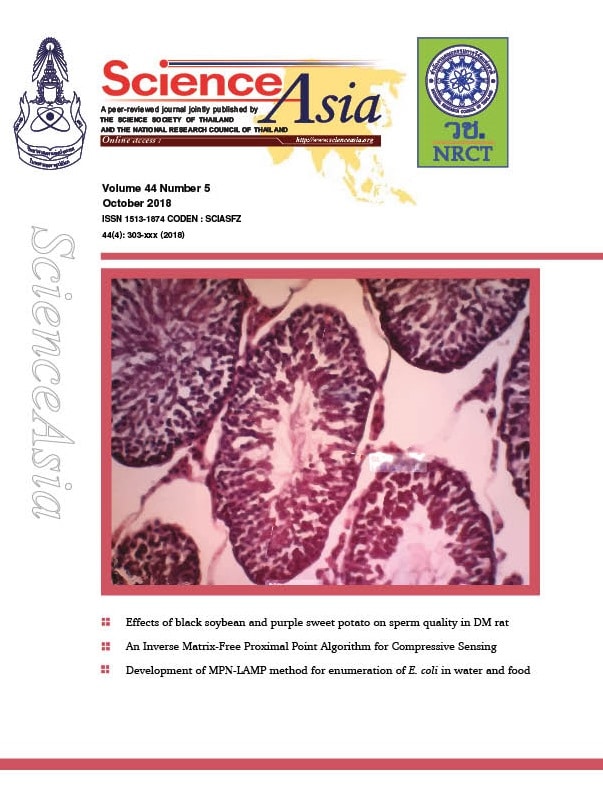
Nongenomic effect of aldosterone on angiotensin II type 1 receptor dimerization in human renal proximal tubular cells: Implications for endoplasmic reticulum stress (2018)
Title : Nongenomic effect of aldosterone on angiotensin II type 1 receptor dimerization in human renal proximal tubular cells: Implications for endoplasmic reticulum stress
Researcher : Sinphitukkul, K., Manotham, K., Eiam-Ong, S., …Inagi, R., Eiam-Ong, S.
Abstract : In vitro studies have showed that aldosterone increases oxidative stress molecules through a nongenomic effect. Oxidative stress induces angiotensin II type 1 receptor (AT1R) dimerization and endoplasmic reticulum (ER) stress, leading to renal tubular damage. However, the nongenomic effect of aldosterone on AT1R dimerization and ER stress in renal cells has not been determined. Here, we examined the nongenomic action of aldosterone in renal proximal tubular epithelial cells (PTECs) to better understand the underlying mechanisms. HK-2 cells, human renal PTECs, were exposed to vehicle or aldosterone for 30 min. In two additional groups, the cells were pretreated with eplerenone, a mineralocorticoid receptor (MR) blocker or apocynin, an NADPH oxidase inhibitor, for 30 min before aldosterone incubation. Protein abundances of dimeric/monomeric forms of AT1R, p47phox (a cytosolic part of NADPH oxidase), and activating transcription factor 4 (ATF4), a transcription factor responsive to ER stress, were determined by Western blotting. Aldosterone nongenomically increased plasma membrane protein expression of AT1R dimeric forms in a time- and dose-dependent manners. The levels of the cytosolic p47phox protein declined while the membranous protein level was enhanced following aldosterone treatment. The aldosterone induced alteration in these two proteins was abolished by pretreatment with eplerenone or apocynin. In addition, aldosterone (100 nM) induced nuclear ATF4 protein accumulation in a time-dependent fashion, which was blocked by apocynin and partially attenuated by eplerenone. Aldosterone nongenomically increased AT1R dimerization and nuclear ATF4 protein accumulation dependent on MR and NADPH oxidase activation. Hence aldosterone could induce AT1R dimerization and activate the endoplasmic reticulum stress response.
Link to Academic article: doi: 10.2306/scienceasia1513-1874.2018.44.332
Journal : ScienceAsia, 2018, 44(5).
Bibliography : Sinphitukkul, K., Manotham, K., Eiam-Ong, S., Nangaku, M., Inagi, R. & Eiam-Ong, S. (2018). Nongenomic effect of aldosterone on angiotensin II type 1 receptor dimerization in human renal proximal tubular cells: Implications for endoplasmic reticulum stress. ScienceAsia, 44(5), 332–339.